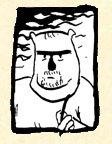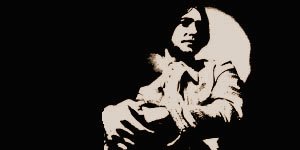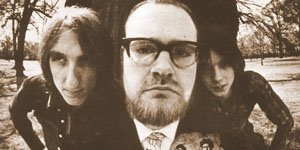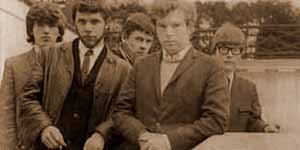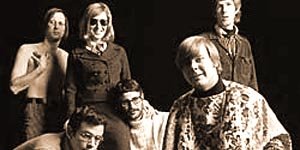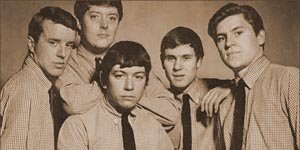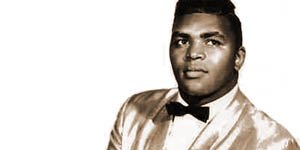The Beat Goes On, Part XIII.
Sorry for the delay. (Maybe I should retitle the blog that.) Personal stuff, which I won’t get into except to say that of all the times for a manic swing to end.
080. Bob Dylan “Rainy Day Women #12 & 35”
(Bob Dylan)
1966
Available on Blonde on Blonde
Yeah, yeah, everybody must get stoned, real cute, like you’re pretending to talk about what Jesus talked the Pharisees out of doing to the woman caught in adultery, but come on, man, everyone knows what you’re really talking about. I mean, giggling during the recording is kind of a giveaway. But that’s not what makes the song great; in fact, that’s what puts the song so low on the list (I’m one boringly licit dude). What makes the song great is the lurching Felliniesque marching band behind Bobby, which sounds more sozzled than baked (which is better style anyway), the Mississippi Sheiks-like cries of the guys in the band, and the fact that Dylan had the balls to open his magnum opus with this thing. The only person who would ever attempt anything like a similar style of music would be Tom Waits, twenty years later.
079. Yoko Ono “Remember Love”
(Yoko Ono)
1969
Available on Unfinished Music, No. 1: Two Virgins [Bonus Tracks]
Put away the pitchforks and torches; have you heard the song? This isn’t her usual tuneless shrieking (though I’d also argue that there’s nothing usual about it, and it’s some of the most important avant-garde music ever, but that’s not what this is), this is the B-side to “Give Peace a Chance,” and while its hippie-love sentiments are on a par with that (though it hasn’t had all the meaning leached out of it by nonstop references over the past forty years), musically it’s the most tender, fragile thing any Beatle was ever associated with. Predicting the most delicate 90s indie music, Yoko sings in such a hushed voice that you can hear the movement of her tongue against her teeth. It’s minimalist, it’s twee, it’s as defiantly uncommercial as her most uncompromising side-length banshee howls — and because she recorded the one, the other is more palatable. It works both ways.
078. The Jimi Hendrix Experience “The Wind Cries Mary”
(Jimi Hendrix)
1967
Available on Are You Experienced?
When I was first trying to make some sense of this whole Popular Music thing, I read in a collection of essays about the Great American Songbook that the average rock song of the 1960s was far more melodically and harmonically advanced than the average Gershwin, Porter, Rodgers, or Kern tune. This was the example they gave. It’s probably cheating; Hendrix was famous for using alternate tunings, and of course it’s easier to use odd harmonics when you’re an idiosyncratic genius writing for yourself on the guitar instead of a professional hit-making genius writing for millions of amateur pianists and the voice of Fred Astaire. The lyrics bite Dylan, but his inimitable guitar patterns and the psych-soul atmospherics make it more Pop Art. Also, listen to the snare drum rattle without being touched; was it right next to the guitar amp or something? More people should use that effect.
077. Marianne Faithfull “Sister Morphine”
(Marianne Faithfull/Mick Jagger/Keith Richards)
1969
Available on Marianne Faithfull’s Greatest Hits
This is where Marianne Faithfull as we know her today, the high queen of low drama, begins. It’s an eerie, half-psychotic first-person narrative that makes me think of delirious World War I soldiers recovering in shadowy, skeleton-staffed hospitals in a shelled-out Europe; or of Faithfull’s own descent into addiction and tenement-squatting in the 70s, which you can hear beginning here. The Stones put the song on Sticky Fingers, but Jagger’s too sleazily comfortable with the material: it’s Faithfull’s spooked, desperate vibrato that really sells the psycho-horror of her lyrics. A “Heroin” for Swinging London, it’s got the Stones at their most “Gimme Shelter” creepy backing her up. Sounds like, anyway.
076. The Silver Apples “You and I”
(Simeon/Cecil Taylor/Danny Taylor)
1969
Available on Silver Apples/Contact
They say that the Silver Apples were the first electronic group, as we think of the term today. I’m not gonna say they’re wrong — what do I know? I never listened to them till about a month ago — but this song reminds me more of a Dr. Dre production than of Technotronic. Maybe it’s the way the electronic noises swirl and loop rather than lock and riff, echoing solemnly off the cavernous drums rather than filling up with BPM. Maybe it’s the post-industrial lyrics, entirely obviating any need for New Order ever. (But anyway, aren’t hip-hop and electronica the same musical movement, just with different racial masks on?) Suicide is the obvious legacy here, but all kinds of post-punk, from Gang of Four’s twitchy ryhthms to Gary Numan’s icy robo-sheen, owe these guys something. Which wouldn’t matter much if it weren’t a great song; but it’s about the difficulty of interpersonal relationships in a technocratic, constantly-mediated world of apathy and paranoia. Hell, who needs Radiohead, anyway?
075. Moby Grape “Omaha”
(Skip Spence)
1967
Available on Moby Grape
First you hear a gradual build of psychedelic wooshing back and forth, forwards and backwards, then the drum fills hit and suddenly it's a San Franciscan Dave Clark Five. The legend goes that they torpedoed their ambitions by releasing every song off their debut album as a single, which made the underground-heads who ruled rockist opinion in those days look at them askance. “What are you, a serious album rock band or a contrived pop group?” you can hear them saying. “You can’t be both.” Which is, of course, total bullshit, but that’s hippies for you. The song, with its raucous “listen my friends” refrain, lands halfway between Crosby, Stills & Nash and Creedence Clearwater Revival on the fun-and-hook-o-meter, but barrels through with a surf-garage energy that neither of those bands could ever have attempted. Skip Spence did much more complicated, profound and insane work very soon after, but this is the single that should have, by all rights, been a hit.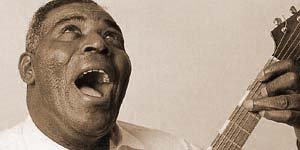
074. Howlin’ Wolf “Wang Dang Doodle”
(Willie Dixon)
1961
Available on His Best
When you read histories of rock & roll (assuming you ever indulge in such trumped-up frippery), the standard line is that after the explosion of rock & roll in the mid-to-late 50s, the artists who began it all died or were jailed or married their thirteen-year-old cousins or joined the Army and went soft. Don’t you believe it. The Wolf was there at the beginning, and he never stopped racking up monster, ear-splitting hits for Chess until well into the psychedelic era. He was always the least slick of the Chess artists (Muddy Waters was more urban, Chuck Berry more suburban), and this song finds him at his loosest and hoedown shuffly. Of course, the song’s about a hoedown shuffle, only it’s black so it’s cool. Actually, call me crazy, but I hear Swordfishtrombones in here. Marc Ribot surely studied the guitar licks off this record, just as the Rolling Stones studied its woozy rhythm, halfway between menace and party, and Eric Burdon studied the black-as-night, devil-guttural voice.
073. Bob Dylan “Masters of War”
(Bob Dylan)
1963
Available on The Freewheelin’ Bob Dylan
Widely considered Dylan’s best political song, this is the kind of thing that Pete Seeger and those fuddy-duddies were bemoaning the loss of when Dylan when electric. But it never was covered as much as protest standards like “Blowin’ in the Wind” and “The Times They Are A-Changin’.” It never had any hit versions. That’s because Dylan was already making the political personal, refusing to talk about any vague them vs. us, instead singing about you vs. me, and piling up personal outrage instead of general complaints about war and economics (a trick he learned from Woody Guthrie’s mature style). When the song twists slowly into a revenge anthem with the final “I hope that you die” stanza, you can smell the distant pine-smoke of Harry Smith’s wild-eyed, grim-faced white gypsies.
072. Fairport Convention “Tam Lin”
(Traditional)
1969
Available on Liege and Lief
Of course, folk music’s always been woolly, wicked, and wild; Greil Marcus’s Old, Weird America hasn’t got a thing on the Old, Weird Europe. (Still the most violent place in recorded history: 17th-century England, and that’s without counting wars.) This is an ancient thing of no real provenance, and what the Convention do to it is considered sacrilege by all true folk-geeks. Though for all true rock-geeks, Richard Thompson doesn’t rawk enough, so there ya go. The rest of us can groove to a punchy, riffy and involved tale about fairies and people having sex and killing each other. It’d be Ren-Faire crap if it wasn’t an actual folk song, but Sandy Denny’s burr of a soprano and the whole group’s Canterbury gallop keep it from being either precious or dreary, and almost — almost, I say — make fantasy an appropriate subject for rock music.
071. The Allman Brothers Band “Whipping Post”
(Gregg Allman)
1969
Available on The Allman Brothers Band
Point one: this is the Allmans, not Skynyrd, and if you can’t tell the difference you need to uncaulk your ears. Point two: All-American hard rock really begins here, as their dual-guitar attack cranks Memphis-style country soul all the way up into the red, giving birth to the stuff that Skynyrd, Charlie Daniels, Molly Hatchet, and Kid Rock would ride to fame and glory (by which time the Allmans would have already lit out for more polyrhythmic jazz territory). Still, no one ever mastered countrified polyphony like these guys. Duane’s stinging leads, Dickie’s harmonic fills, Gregg’s swirling organ: though they got more tender, more funky, and way more improvisatory, they never really got better than this. Listen to the slow, long buildup that ends the song: it’s the best exploration of tension-and-release this side of minimalism, or in the rock arena, until “Marquee Moon.” Hear Gregg’s magnificently raw voice crack on that final “sometimes I feel” — that, ladies and gentlemen, is what it’s all about.
Next: 070-061. >>
